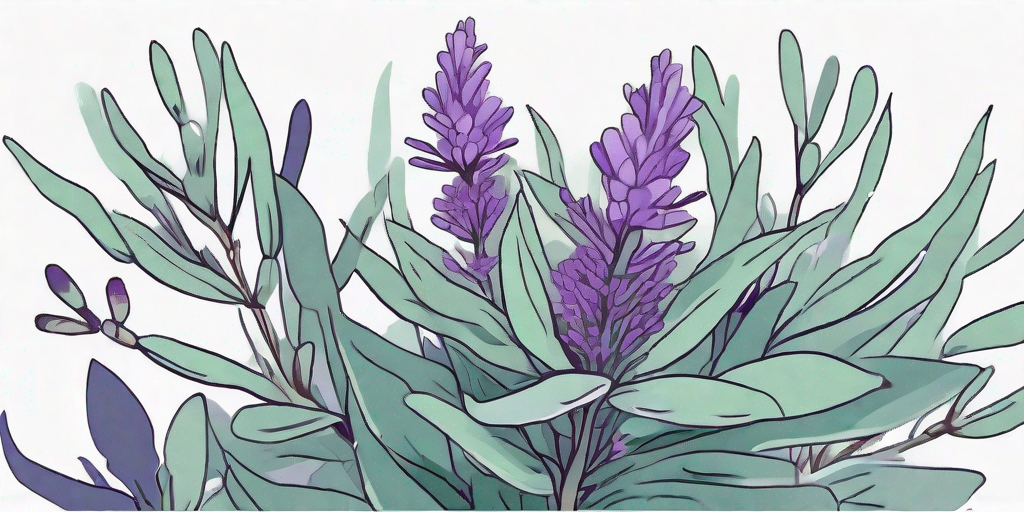
If you're looking for a plant that's as tough as a Texas cowboy and as beautiful as a sunset over the Lone Star State, then saddle up and meet the Texas Sage. This hardy, drought-tolerant shrub is a true Texan at heart, but it's more than willing to bring its unique charm to gardens all over the world. So, grab your gardening gloves and let's dive into the wild world of Texas Sage.
The Basics of Texas Sage
First things first, let's get to know our plant of the hour. The Texas Sage, also known as Leucophyllum frutescens, is a native of the Chihuahuan desert, which straddles the U.S.-Mexico border. It's a member of the figwort family, but don't let that fool you. This plant is all about the flowers, not the fruit.
What makes Texas Sage a standout in the garden? Well, it's a combination of its silvery foliage, vibrant purple flowers, and its ability to thrive in conditions that would make other plants throw in the trowel. But more on that later.
The Look of Texas Sage
One look at Texas Sage and you'll be smitten. This shrub has a dense, rounded form that can reach up to 8 feet in height and width. Its leaves are small, silvery, and covered in tiny hairs, giving the plant a frosted appearance. But the real showstopper is the flowers. Texas Sage blooms with clusters of bell-shaped, lavender flowers that attract butterflies and hummingbirds like a Texan to a barbecue.
And here's a fun fact: Texas Sage is also known as the Barometer Bush because its blooming is triggered by changes in humidity, making it a living weather forecast. Now, that's a plant with some serious skills.
How to Grow Texas Sage
Now that you're properly acquainted with Texas Sage, let's talk about how to grow this desert beauty. Despite its rugged nature, Texas Sage is surprisingly easy to grow, even for those of us who don't have a green thumb.
First, you'll need to find a sunny spot in your garden. Texas Sage loves the sun and needs at least six hours of it each day. Next, you'll need well-draining soil. This plant is a desert native, remember? It doesn't like wet feet. Finally, you'll need to water it sparingly. Once established, Texas Sage is incredibly drought-tolerant and can survive on rainfall alone in many areas.
Planting Texas Sage
When it comes to planting Texas Sage, it's as easy as pie. Or should we say, as easy as Texas sheet cake? Simply dig a hole twice as wide and just as deep as the root ball, place your plant in the hole, backfill with soil, and water thoroughly. And voila! You've just planted a Texas Sage.
One thing to keep in mind is that Texas Sage doesn't like to be fussed over. It's a bit like a cowboy in that regard. It prefers to be left alone to do its thing. So, resist the urge to overwater or overfertilize. This plant is a minimalist and likes to keep things simple.
Caring for Texas Sage
Once your Texas Sage is in the ground, caring for it is a breeze. This plant is low-maintenance and high-reward, making it a favorite among busy gardeners and those living in drought-prone areas.
As we mentioned earlier, Texas Sage doesn't need a lot of water. In fact, overwatering is one of the few things that can harm this plant. So, water sparingly and only when the soil is dry to the touch. And remember, no wet feet!
Pruning Texas Sage
When it comes to pruning Texas Sage, less is more. This plant naturally grows into a pleasing shape and doesn't need a lot of trimming. However, if you want to keep it compact or create a specific shape, you can prune it lightly in late winter or early spring.
But be warned: Texas Sage doesn't take kindly to heavy pruning. If you get too snip-happy, you could end up with a plant that's more stick than bush. So, keep your pruning to a minimum and let Texas Sage do its thing.
FAQs about Texas Sage
Is Texas Sage deer resistant?
Yes, Texas Sage is deer resistant. Its silvery foliage isn't very appetizing to deer, making it a great choice for gardens in deer-prone areas.
Can Texas Sage grow in pots?
Absolutely! Texas Sage can be grown in pots, making it a great choice for patios, balconies, or other small spaces. Just make sure to use a well-draining potting mix and a pot with drainage holes to prevent waterlogging.
Does Texas Sage attract pollinators?
Yes, Texas Sage's vibrant purple flowers are a magnet for butterflies, hummingbirds, and bees. So, if you're looking to attract pollinators to your garden, this plant is a fantastic choice.
Conclusion
There you have it, folks! Everything you need to know to grow and care for Texas Sage. This hardy, drought-tolerant shrub is a true garden gem, offering beauty, resilience, and a touch of Texas charm. So, why not give it a try? Your garden (and the local pollinators) will thank you.
Remember, growing Texas Sage is as easy as pie. Or Texas sheet cake. Or whatever your favorite Texan dessert might be. The point is, it's easy. So, get out there and start planting!















